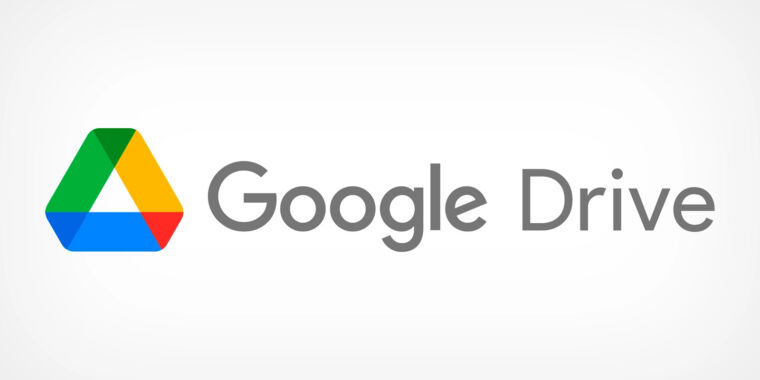“Lost” is such a strong word. They prefer “permanently misplaced”.
In someone else’s homework folder.
dude i lost my 1.5tb of pornhub collection… i regret not doing nas :(
You mean your nass?
mah nas ass
This is why you need backups.
But Google Drive was my backup
deleted by creator
This is the best summary I could come up with:
Those instructions sound like they are aimed at preserving whatever possible file cache would exist on your computer.
The description of this being a “sync” issue doesn’t really make a ton of sense, since no matter what, the Drive web interface should show all your files and let you download them.
One is the traditional “mirroring” mode that works like Dropbox, where files on your hard drive get uploaded to the cloud, downloaded to all your other devices, and stay on your computer.
You’re expected to have an always-on Internet connection and, when you try to open a cloud file link, the actual data is quickly streamed to your device so applications can access it.
Besides whatever this issue ends up being, Google has also tried to cut Drive costs this year by rolling out a hard cap on file count (in addition to the usual byte size limit), which was later reversed after it got press coverage.
Google enacted this file limit as a total surprise and didn’t talk about it for months, which left some businesses with broken setups scrambling to try to figure out what was happening.
The original article contains 644 words, the summary contains 190 words. Saved 70%. I’m a bot and I’m open source!
I hate Google but realistically, the chance of Google losing data is definitely higher than the chance of me losing data in my NAS. That is if either one is the sole copy of said data. Again, realistically, Google Drive, for most people, is the storage. People trust (and for good reason) that Google will take care about backup (all the client-side problems that might arise being out of bound for most people’s comprehension). I don’t blame users using GD as a sole storage in that regard. Sure, they could’ve done better, but if they’re paying for it(and even if they’re not), it should be expected that the data is available without no (significant) downtime.
I use Nextcloud btw.
I have a few questions about a home NAS, if you don’t mind. I see a lot of love for both Synology and NextCloud. Which do you prefer? Also, do you think it’s worth having NextCloud on a cloud machine? How do you access your NextCloud instance outside your home network?
Synology > Nextcloud on VPS(I assume what cloud machine is that you are talking about) imo. Nextcloud is quite resource intensive. You won’t be happy with just $10/m VPS, that is aside from obvious storage size problem.
Synology is expensive but reliable. Does one job well but somewhat limited. Synology and Nextcloud have different values and strong points. You’ll be happy if all you do is just file sharing with both options, synology being easier of course.
I use my own machine at home to run Nextcloud among other various selfhost stuff. It works flawlessly. After the initial setup, almost no tinkering is necessary. I just reverse proxy Nextcloud so there’s no issue with accessing but if you can’t/don’t want to, you can use something like Zerotier or Tailscale. Personally recently migrated to Tailscale as it’s just more user friendly.
ITT: Nerds who think they can reliably beat Google’s SLA.
I don’t know wtf is goin on at Google for the past few years, but their software is glitchy as fuck. Google home speakers keep transcribing our broadcasts and smart devices are disappearing that are still in Smarttings.
I lost all the captions on my photos on my pixel a couple months ago. It doesn’t make sense that those would be stored in the cloud as I didn’t have syncing on, but they’re gone now. 🤷♂️
deleted by creator
Great I.better check my account.
Yeah, stuff like this is glad I didn’t immediately start putting everything on Drive like they want us to at my job now. I do everything on my iPad and computer, then upload a copy to Drive. Having to work with Classroom daily has made me lose all trust in Google stuff, I swear.
The rule to backups is 3-2-1.
3 Total Copies.
2 Different Media. Think Cloud vs HDD vs NAS vs CD vs Thumb Drive
1 Off-site. Typically the cloud but you can use another physical location so long as it isn’t likely to be affected by the same disaster (read: fire, flood).
If you follow the three rules - no single event can destroy your data.
But if you want to talk about probabilities - this is the one time Google Drive has lost a significant amount of data in 11 Years. Millions of local storage devices in the form of iPads and Computers have died while Google Drive has been alive.
no single event can destroy your data
Chicxulub impactor disagrees
Right ,I guess I meant no single event where you would care about that data afterwards.
A massive solar flare could destroy all digital data on the entire planet, and send us back into the stone age. Hundreds of thousands would die. Suddenly those TPS report backups won’t be as important as you thought they were.
“But youre still coming in to work on monday, right?”
I started to backup my photos to immich about a month ago, nice timing.
Use mega
Thats just another untrusted cloud service that slighty better than google. The best option is just self-host your own storage service
Yes, thats the best option but MEGA is still better than Google.





